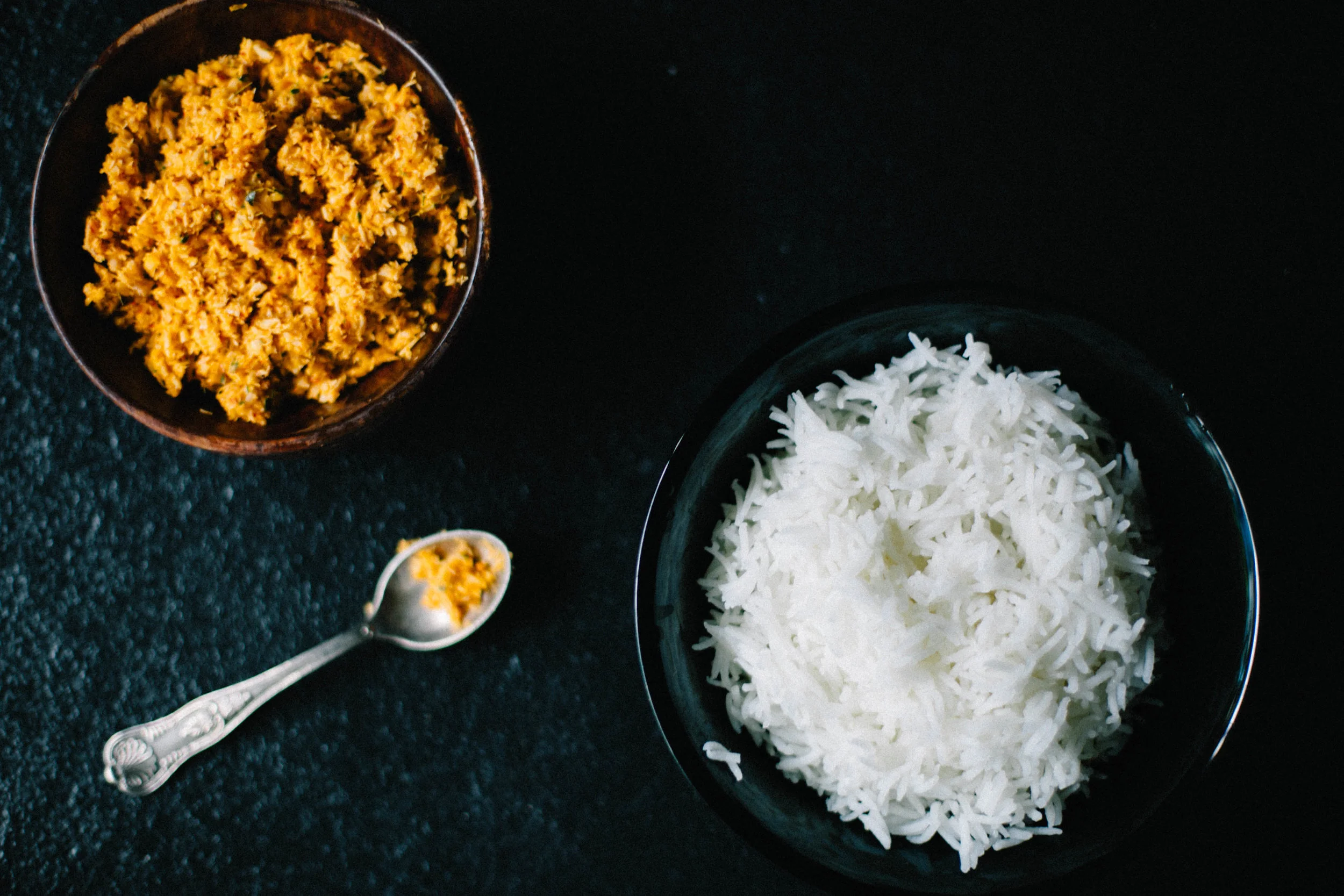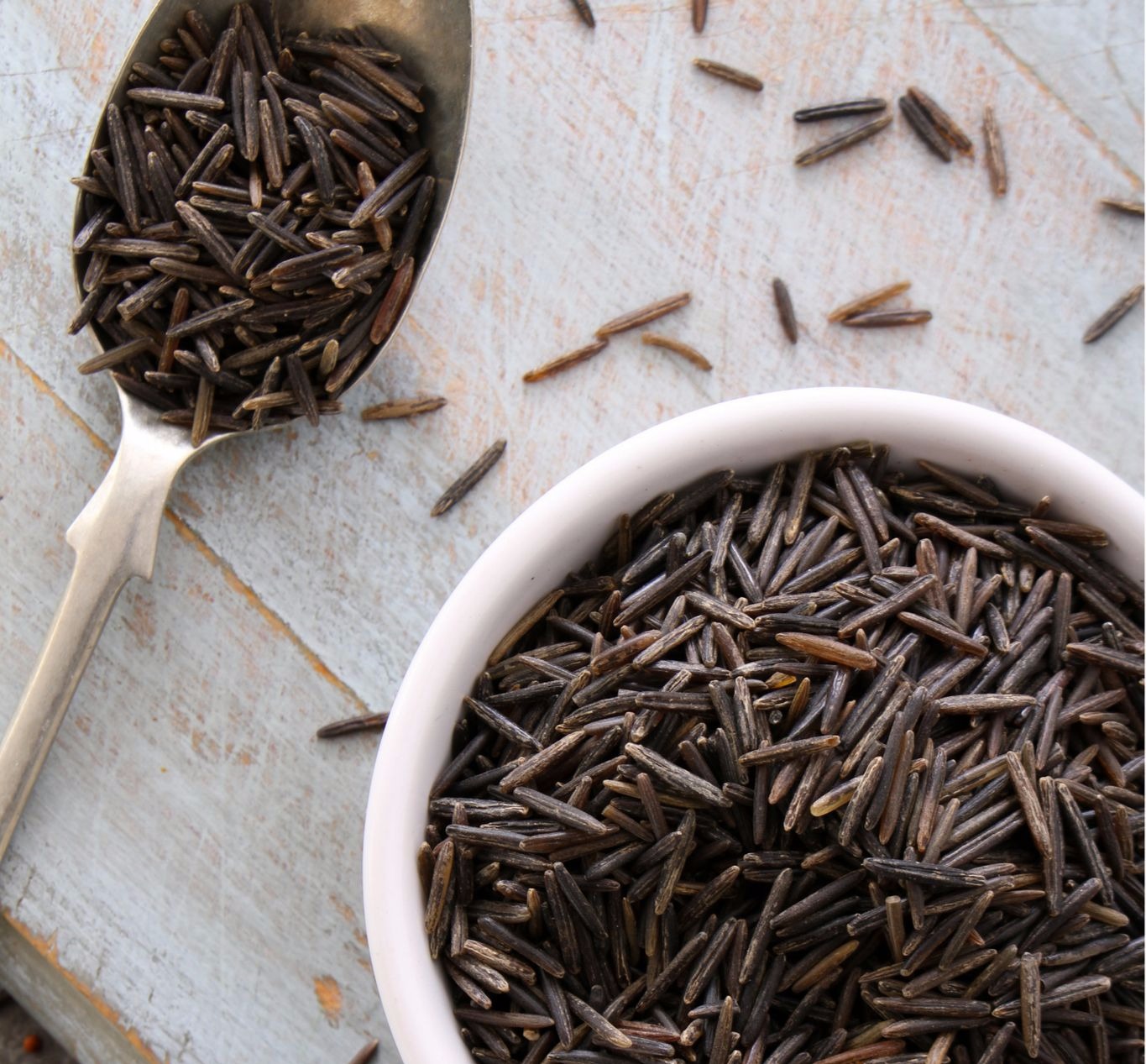Rice Matters: All Your Burning Questions About Rice Answered

In What Would Nigella Do we explore the basics of cooking and being comfortable in a kitchen. The title is a hat-tip to our favourite home cook who approaches cooking with resourcefulness, practicality, and most importantly, a sense of humour. Although this is a series that may appear to be directed at beginners alone, it is also for that cook who makes the perfect pavlova, but never seems to get that pot of rice right. In the time of MasterChef and molecular gastronomy, we are sometimes a little sheepish to ask the seemingly obvious questions. When faced with such a dilemma, we ask ourselves, What Would Nigella Do?
A trip to your local supermarket or provisions store in search of rice can be stressful. And why wouldn’t it be? There are more than 40,000 varieties of cultivated rice around the globe, each one quirky and stubbornly confusing in its characteristics to the unfamiliar cook.
The technical terms used are equally confusing — parboiled rice, raw rice, boiled rice — and perhaps the most confusing of all — what in heaven’s name is silky. And why is it that parboiled rice takes longer to cook than raw rice? These may be a few of the questions you ask yourself as you try to make sense of the hundreds of different options that your local supermarket offers. This is the point where I usually buy pasta and walk out.
But recently, I’ve been feeling like I’m not really doing my Malayali roots proud until I can cook that perfect pot of rice with soft, but distinct round grains, that tumble like ‘mani mani’ or beads. In an effort to demystify rice, I have talked to the director of a rice mill, the former hear of department of a national food lab, a chef and a blogger specialising in south Indian food. All interspersed with frantic calls to my mother, of course. Here’s what I have uncovered.
Long-grain, Medium-grain and Short-grain
The simplest classification of rice is based on the size of the grain. And it falls under three broad categories— short-grained, medium-grained and long-grained rice. This type of classification is based on the ratio between the length and the width of a grain of rice when it is cooked. The general belief is that short grained rice is the starchiest, and as the grain gets longer, the starch content reduces. However, Dr. Syed Ali, the former head of the Department of Grain Science and Technology at the Central Food Technological Research Institute (CFTRI), says, “this isn’t strictly true and applies more to western varieties of rice. We have a lot more varieties than they do — we even have short-grained varieties that are non-sticky.”
Long-grain rice
Basmati is the most popular example of a long-grained rice variety. Thin, delicate and long, each grain of rice retains its shape, and doesn’t form clumps, making sure that the biryani or pulao you’re cooking stays fluffy. Jasmine rice, which is a Thai varietal, so named for its floral fragrance, is a popular choice for making fried rice.
Medium-grain rice
Sonamasuri, popular in South India is an example of medium-grained rice. They work well in dishes that are more porridge-like in consistency as the starch makes it sticky. Arborio rice, used to make risotto, is another example of a medium-grained rice. Dishes like pongal are best made with a medium-grained rice — Sonamasuri or Kaveri ponni work well here, Chef Thomas Zacharias, Executive Chef of the Bombay Canteen says.
Short-grain rice
Sushi rice and sticky rice are examples of short-grained rice. In south India, Ponni rice is a type of short-grained rice that is eaten boiled. However, due to the parboiling process that it undergoes, it does not turn mushy on cooking. Joha, an aromatic short-grained rice grown in Assam, Gobindobhog from West Bengal are other Indian varieties of short grained rice.
Par-boiled rice and raw rice
These two terms were a source of endless confusion, and it wasn’t until I spoke to Mr. Enayath Khan, who is the director of Habib Oil and Grain Processing that it became clear to me. There are two processes that are applied to paddy (rice that still has its husk). Certain varieties are eaten only par-boiled, such as Matta and varieties like Sonamasuri are used in both their raw and par-boiled forms.
Parboiled rice
To make matters more confusing, parboiled rice is referred to commercially as boiled rice. Technically however, the process that it undergoes is parboiling or partially boiling, and to keep it technically accurate, we will refer to it as parboiled rice in this article.
In a tank, paddy is soaked in water that has been heated to 90-95 degrees Celsius for 8 hours. To maintain constant temperature, the water is circulated through the tank every hour. After soaking, the next step is to steam the rice. In the same tank, steam is passed through the grains from the bottom upwards. The grains are then allowed to sit in the tank for half an hour to one hour. This process helps in hardening the grains. By this point, the tell-tale sign of a par-boiled grain is evident — it turns to a shade of yellow or golden and has a glassy exterior.
Lastly, the grains are dried in a mechanical drier, where hot air, at around 120-130 degrees Celsius, is passed through the rice for 6-7 hours. After being par-boiled, the rice is processed exactly like raw rice — dehusked, and then polished.
Parboiled rice is consumed all over the world, and in India, it is common practice in Kerala, West Bengal and Orissa. This process prolongs the cooking process, but it allows the short-grained rice, which would otherwise turn pasty on cooking, to retain its structure. However, from a nutritional point of view, it is healthier than raw white rice because the process moves micronutrients present in the bran into the endosperm.
Raw rice
As the name suggests, this is the version that undergoes minimum processing. A grain of rice has three layers — the husk, the bran and the endosperm. For every type of rice, the husk is removed, followed by a polishing process that removes the bran. White rice is polished in such a way that only 1% - 0.5% of the bran remains on the grain. Brown rice has a thicker layer of bran present on it. The last step in milling the rice is to pass it through a mesh, removing all the broken grains in the batch.
Mr. Khan tells me that polished rice or white rice is a fairly new phenomenon in India, introduced by the British. Prior to this, unpolished brown rice was the norm. “Removing the bran helps the grain cook faster, and also keeps away insects that are drawn to the sweetness of the bran”, says Mr. Khan. However, brown rice has a higher fibre content and rates lower on the glycemic index, and is favoured by the health conscious.
White rice can also be further polished to practically remove all traces of bran. And this ultra pearly white rice is called silky, presumably because of if its smooth surface. For someone who was always under the impression that brown rice was white rice’s cousin, knowing that they’re just different levels of polishing was a revelation. So technically, all kinds of rice (except black and red rice) could be either brown or white. However, people prefer to eat certain rices in their brown form over others — like brown Basmati and brown Sonamasuri.
Wild rice is not rice at all, but in fact, a member of the grass family; a long, black grain, native to North America.
Other Varieties
Red Rice
This rice has a red husk instead of a brown one, and is therefore referred to as red rice. It is richer in fibre and high in antioxidants. Matta rice, that is consumed widely in Kerala is a red rice.
Black Rice
Black rice is also known as forbidden rice, because in ancient China, the common man was prohibited from growing it. In India, this short-grain rice grows in Manipur and is called chak hao. Chef Zacharias tells me that the popular Red Snapper Sol Kadi Ceviche at The Bombay Canteen uses puffed black rice to lend nuttiness and crispness to the dish.
Wild Rice
This variety isn’t actually a rice, but the seed of an aquatic grass species native to North America and China. Used in salads or even with a combination of other grains, black rice is generally added for texture and a characteristic nuttiness.
On Cooking Rice
Cooking the perfect pot of rice is as much an art as it is a science. There are many ways of making rice — in a pressure cooker, rice cooker, a clay pot or even in the microwave. Be sure to wash the grains thoroughly before cooking. And in case of certain long-grained rice varietals like Basmati, soak for 30 minutes prior to cooking. Most of the rice-cooking we do in India falls under two categories: the absorption method and the pasta method or the the boil-and-strain method, as Nandita Iyer, from Saffron Trail tells me it’s called.
Absorption
In this method, a fixed ratio of rice to water is used — for a short-grained rice, this ratio is closer to 2 cups of water for 1 cup of rice, whereas for long-grained rice, it’s more like 2.5 cups for every cup of rice. However, this is only a general rule of thumb and each variety of rice cooks differently. Put water and the rice into the vessel, and let it come to a boil. As it boils, turn down the heat to low, cover and let it simmer very gently for another 20 minutes. To check for doneness, pick up a grain of rice from the top and press between your fingers. If it has the right amount of give, your rice is ready. Use a fork to fluff up the rice. This method is used when making dishes like biryani and pulao, where all the water gets absorbed by the grain.
Boil-and-strain method
In this method, fill a large pot 3/4th of the way up with water and bring to a boil. Add the rice, a generous sprinkling of salt and cook on low until the grains are soft without being pasty. Drain the water and keep the rice warm until serving.
The rice journey is a long one, but also, a delicious one! With a little practice and patience, knowing how to cook a pot of rice depending on the rice you have at hand will be intuitive. Although I’m far from being a pro, it feels like i’ve come a long way since the days I used to think that Silky bodhana was somehow a reference to the actress Silk Smitha.
Aysha Tanya is the editor and co-founder of Goya Media. When not working at Goya, she enjoys reading and marvelling at the wide range of mustard types available in the supermarket.
YOU MAY ALSO LIKE










